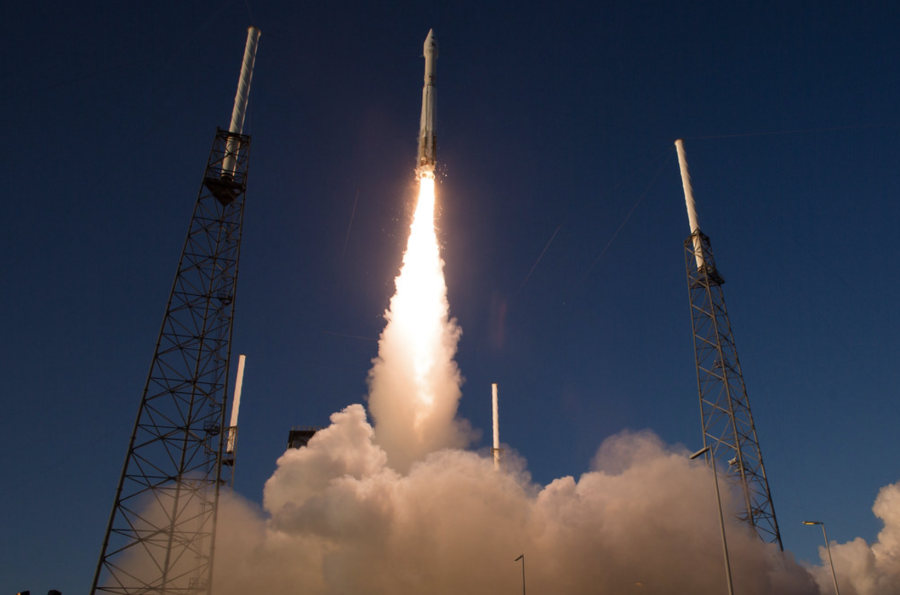This year has had many developments in space research, from asteroid research to Mars drones being developed.
Mars exploration drones
One of the most recent research projects through the University of Arizona takes place in Iceland. Christopher Hamilton, associate professor for the Lunar and Planetary Laboratory, is the lead principal investigator. He is in Iceland to test the Mars exploration drones. He is testing the drones in Iceland because it has a similar landscape to Mars in terms of geological history and history from an astrological perspective. Hamilton explained that drones are able to work in space because Mars is about 38% of the Earth’s gravity.
“That’s not necessarily a problem, in fact having lower gravity is actually easier for drones to be able to fly, but Mars does have a much thinner atmosphere. Since it has a much thinner atmosphere it can be quite challenging to be able to fly,” Hamilton told the Daily Wildcat back in February.
Hamilton had studied in Iceland before during a volcanic eruption and happened to experience the same thing this year when the volcano erupted in Iceland.
Quasar research
In January, researchers from the UA found the most distant quasar to date. Quasars are powered by gas spiraling at high velocity becoming a black hole.
Researchers Feige Wang and Jinyi Yang found two 1.5 billion solar mass black holes at redshift 7.5. This meant that they required the most massive seed black hole than any other quasar found.
Wang explained to the Wildcat, “that by assuming that the quasar has been accreting at the maximum growth rate, it requires a seed black hole to be more massive than 10,000 solar masses, which are two orders of magnitude higher than that produced by the first-generation stars.”
This meant that the seed black hole was most likely produced from the first-generation star. From earlier surveys conducted, they had learned that supermassive black holes in the universe can require massive seed black holes.
The researchers had explained that the challenges of their research stemmed from the fact that the current success rate for finding quasars is around 1%. In order to find this quasar, they had to observe a lot of targets.
Their goal is to use their research with these quasars to investigate the galaxy and the young universe.
Asteroid sample
In October 2020, the OSIRIS-REx mission collected a sample from asteroid Bennu, which was not an easy task due to Nightingale’s craters made up of rocky hazards which the spacecraft needed to avoid.
Dante Lauretta, OSIRIS-REx principal investigator and UA professor of planetary science and cosmochemistry, told the Wildcat, “The spacecraft is taking pictures as it descends down to the asteroid’s surface and calculating onboard where it is going to make contact and it calculates if it is going to get too close to what I call Mount Doom.”
The most challenging part of this mission, according to Lauretta, was the rugged and rough surface of the asteroid. The spacecraft had to adapt in a lot of ways in order to navigate the hazardous surface of asteroid Bennu.
They were able to successfully touch down and collect a sample of the asteroid while avoiding all of the hazards.
Recently they conducted a Bennu farewell tour at the beginning of April. During this tour, they were able to have a last glance at Bennu and see how the spacecraft altered or affected the asteroid.
Updates will follow as the spacecraft begins to depart for Earth on May 10.
RELATED: What have we learned about the coronavirus in the past 15 months?
Aspera mission
In January, it was announced that the UA will lead the NASA Aspera mission. This mission’s goal is to solve the mystery of how galaxies form and it is being led by Carlos Vargas, a postdoctoral researcher in the UA’s Steward Observatory.
The mission will produce the first maps of the “warm-hot” phase of gas that surrounds galaxies, which is estimated at 300,000 degrees.
The main challenge of this research, according to Vargas, is that the ozone layer of the Earth’s atmosphere blocks ultraviolet photons.
Vargas told the Wildcat, “Understanding how this gas flows in and out of galaxies is crucial for understanding how galaxies evolve over time.”
They are using a telescope to collect enough ultraviolet photons to produce maps of the warm-hot phase of gas.
However, designing a telescope was not easy due to the extremely tight budget. Yet the team is ready for any unexpected challenges and is excited to see how the five-year project will play out.
Follow Jillian Bartsch on Twitter









